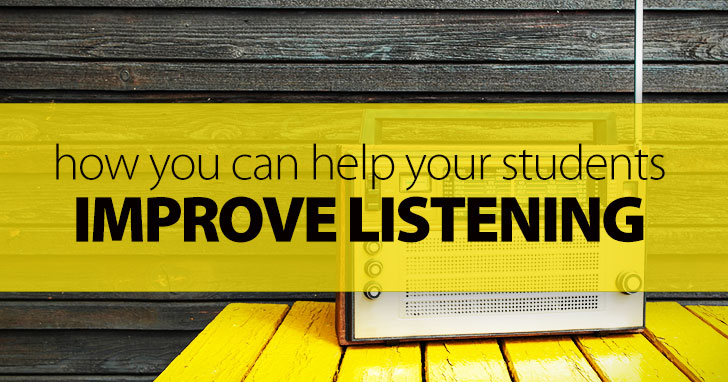Help Your ESL Students Improve Their Listening: 7 Ideas that Really Work


“Although listening is obviously just as important as reading, writing and speaking, I’ve come to realize I don’t really include listening as part of instruction or plan activities to intentionally practice listening only. So how do you really teach listening in a way that will help students improve this skill?” *
They’re listening to you and their classmates, but they also have listening exercises, often provided by the textbook you’re using in class. But have you ever asked yourself if this is enough? Do the listening exercises they currently engage in really help them develop the listening skills they need to communicate more effectively in English? Listening is often thought of as a passive skill. But it’s a skill that needs to be actively and conscientiously honed. So here’s how you can help students improve their listening.

Don’t make the mistake of thinking that you must teach listening just because it’s one of the four essential skills. The top priority for ESL students is to be able to communicate in English, and there can be no communication without listening. ESL students need to improve listening in order to navigate a whole series of real life situations from checking in to a hotel to closing a business deal. So, first, before we can start helping students, we must understand the practical importance of having sharp listening skills.
It’s very easy to talk about “improving listening skills” and “helping students listen better”, but what exactly are we talking about? “Listening” encompasses a whole other subset of skills, especially when we’re talking about ESL students. Before we can help students “improve listening”, we must define and understand exactly what type of listening skills we’re talking about. Here are just a few examples:
Each group of ESL students is different from the next. Some groups may need to work more on some skills than others. Some may have weaker listening while others have excellent listening comprehension. So, before you do anything else, assess your students’ needs. Your class may be excellent at grasping details but may need to work on identifying the tone or the context. Consider very specific needs. Business English students may need to understand what their counterpart is saying in a negotiation before they can close a deal. What if you have students who study English for leisure? They may need to work on grasping details, for example, when they travel and need to obtain specific information about schedules, flights and hotels. Assess your class as a whole and try to define the specific listening strategies they need to work on.
Once you’ve defined your students’ needs, you inevitably come to this conclusion: the textbook audio component is not enough. You’ll need to add and plan listening tasks that are specifically targeted to your students’ needs. For example, students who need to work on grasping details can listen to airport or train station announcements, dialogues involving hotel clerks, and so on. Will you need other sources of audio? There are some great places to look for ESL listening material.
No matter the type of listening exercise you give your class, always prepare them for what’s to come by giving them a warm up first. Here are some terrific warm-up exercises for better ESL listening.
Simply listening for the sake of listening is not enough. Students must be trained to listen with a specific purpose in mind. Do they need to listen for the main idea or grasp specific details? Give them activities where the purpose is crystal clear.
Whatever type of listening skills you’re helping your students develop, you’ll need to be consistent and give them as much practice as your lesson plans allow. As with any other skill, the more they get to practice, the more they’ll improve. Design your own quizzes and assess their listening, then fine-tune future listening exercises.
They can do that at home in their own time. They can watch movies, listen to music or stream videos on the Internet. But in your classroom, you’ll need to take the reins if you want to steer them towards better listening.